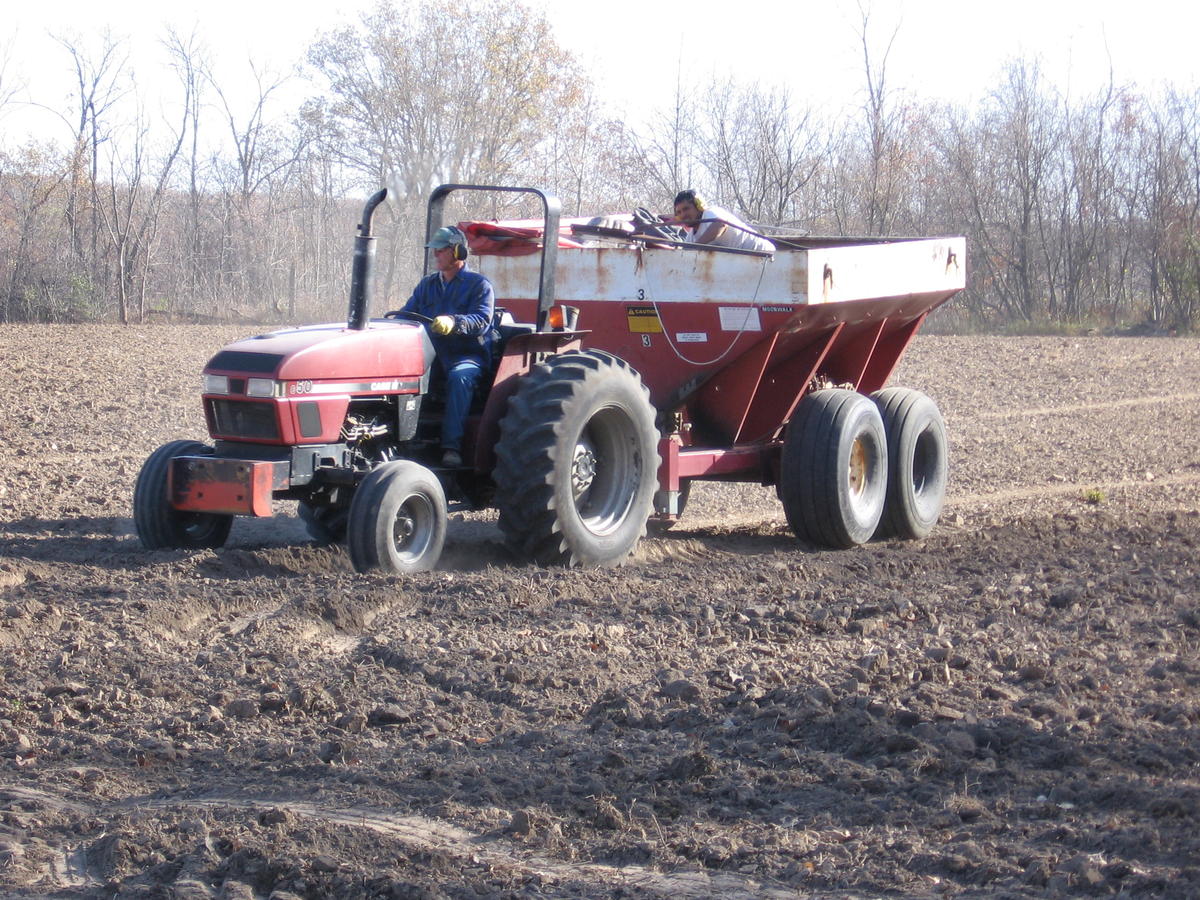Overview
Four agricultural fields were direct seeded with red oak, bur oak, black walnut, black cherry, and green ash in the fall of 2000. Two fields received follow up crop tree release and two had no follow-up treatment.
Silviculture Objective(s)
1. Convert agricultural fields to hardwood forest with a desirable species composition.
2. Evaluate the seed mix, competition control, and crop tree release.
Pre-treatment stand description and condition
Stand establishment and management history:
Four open agricultural fields with common crop cover histories (corn, soybeans, hay) were treated.
Pre-treatment species composition:
None - open fields.
Pre-treatment growth and stocking:
None
Pre-treatment forest health issues:
None
Landowner objectives/situation:
Establish natural looking hardwood forests made up of desirable native species through direct seeding.
Silviculture Prescription
Create a natural looking hardwood forest of desirable species with initial stocking rates of over 3,000 stems per acre in year one. Ash was added to the seed mix as a nurse crop with the desired crop trees being red and bur oak, black walnut, and black cherry. Thin the stand after 10 years, identifying 75 to 100 crop trees per acre. Subsequent thinnings would leave approximately 50 crop trees per acre to harvest.
What actually happened during the treatment
Seeded 2 to 4 bushels of oak acorns per acre, 10-15 bushels of black walnut, 1/4 to 1/2 lbs of black cherry seed, and 1 bushel of ash. Used a modified fertilizer spreader to distribute the seed in a random fashion. The heavy seed was disked in to 1" depth and the light seed dragged in at 1/4" depth. Hickory, maple and white oak was not added due to the unavailability of seed or concerns about the ability of the seedlings to compete (white oak). Herbicide used to release seedlings from competition (Oust at 1/2 oz/ac with Princep and Pendulum at 3 qts/ac each. This was applied during the first two growing seasons. One site was mowed in year one instead by raising the mower above the height of the seedlings.
Two of the fields received a crop tree release treatment 5 years after the initial seeding and two fields were not released.
Post-treatment assessment
Germination was good on all four sites and averaged 2200 oaks/ac, 1700 black walnut/ac and 8100 stems of the ash nurse crop per acre. The walnut and ash dominated the sites early on with the oak falling behind.
Comparing sites receiving and not receiving crop tree release:
Regeneration checks in 2016 show the 2 sites that received crop tree release averaged 903 oaks/ ac and 22 stems of cherry per acre. The oaks on these two sites were 3 to 10 feet tall and 1 to 2 inches in diameter. The walnut trees were 20 to 30 feet tall and 5 to 6 inches in diameter.
On the stes with no followup treatment there were 596 oaks/ac and 12 stems of cherry/ac. The walnut was 8 to 15 feet tall and 3 to 4 inches in diameter. None of the oak were over 2 feet tall.
Plans for future treatments
Additional crop tree release to control competion will be recommended.
Costs and economic considerations
Seed cost approximately $265.00 per acre.
Site Prep from $15 to $113 per acre, depending on initial cover.
Seeding at $80 /ac
Herbicide applications $70/ac/ per year (2)
Summary / lessons learned / additional thoughts
1. Private landowners like the natural look of a forest started from direct seeding.
2. Crop tree release is beneficial, especially for oak growth.
3. Seed amounts and species could be adjusted to find an optimum mix.
